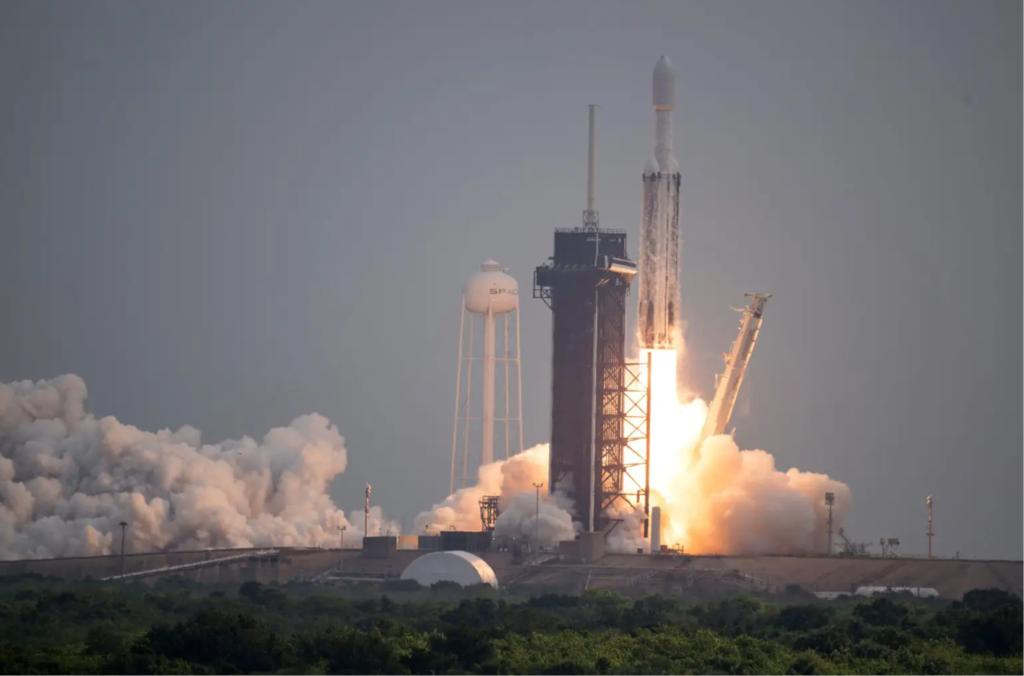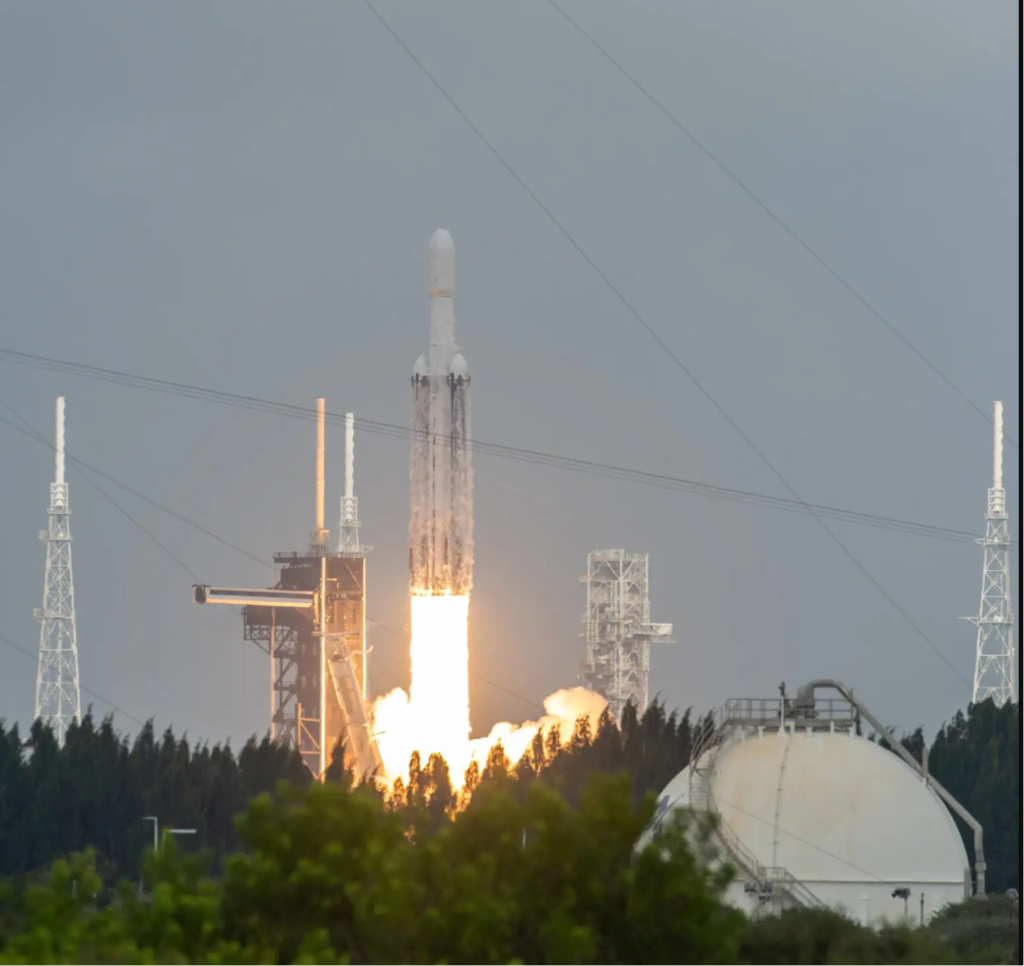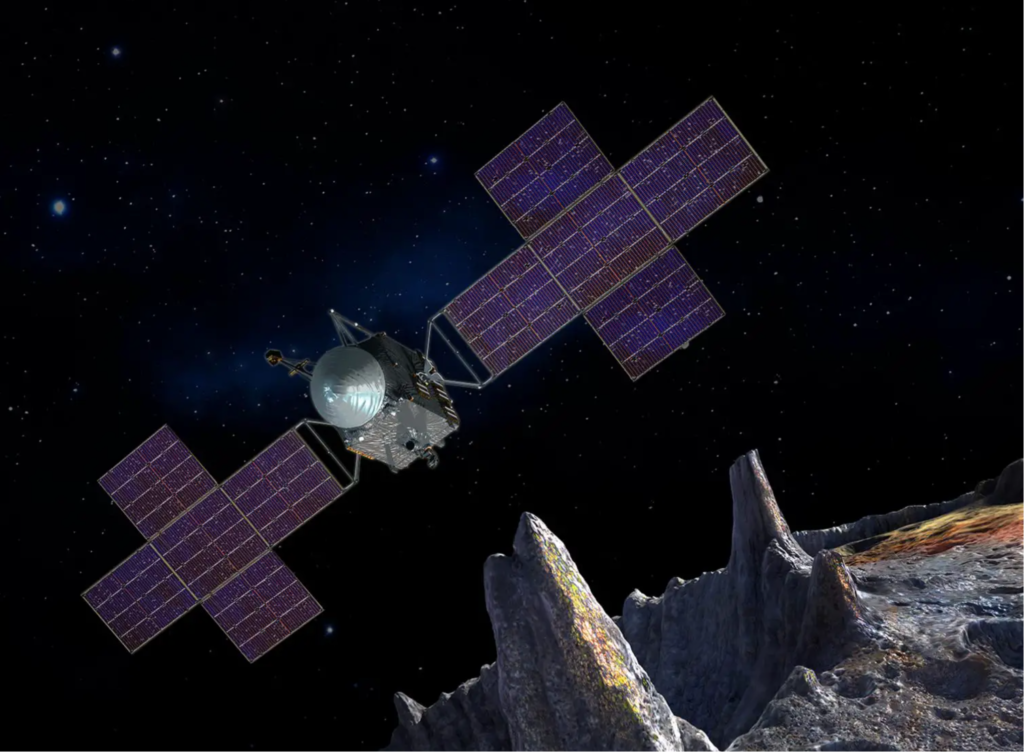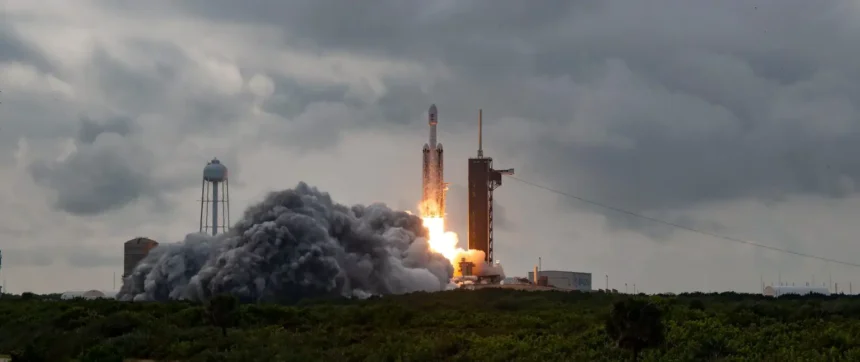The same-named asteroid, which is metal-rich and may provide clues to how rocky planets formed, is the destination of NASA’s Psyche probe. On Friday, October 13, at 10:19 a.m. EDT, Psyche successfully launched from Launch Pad 39A at NASA’s Kennedy Space Centre in Florida aboard a SpaceX Falcon Heavy rocket.
NASA’s Deep Space Optical Communications technology demonstration, which tests deep space laser communications and potentially help future exploration missions by offering more bandwidth for data transmission than conventional radio frequency communications, is integrated into the spacecraft.
Launch Details:NASA’s Psyche
The rocket’s second stage reached a sufficient altitude less than five minutes after launch, at which point the fairings parted from the rocket and descended back to Earth. The spacecraft and rocket separated about an hour after launch, and ground controllers waited to receive a signal from the spacecraft.
After a short while, the Psyche spacecraft initiated a programmed safe mode, in which it does just the barest minimum of engineering tasks while awaiting further instructions from mission controllers on Earth. At 11:50 a.m. EDT, Psyche began two-way communication with the NASA Deep Space Network facility in Canberra, Australia. Initial telemetry data demonstrate the spacecraft’s sound condition.

A SpaceX Falcon Heavy rocket with the Psyche spacecraft onboard is launched from Launch Complex 39A at NASA’s Kennedy Space Center in Florida. NASA’s Psyche spacecraft will travel to a metal-rich asteroid by the same name orbiting the Sun between Mars and Jupiter to study its composition. Credit: NASA/Aubrey Gemignani
Mission Objectives; NASA’s Psyche
The spacecraft will start orbiting the 173-mile-wide (279-kilometer-wide), only metal-class asteroid ever investigated, by August 2029. Scientists believe that Psyche may be the partial core of a planetesimal, a component of an early planet, according to its high iron-nickel metal concentration. A 26-month science inquiry is the aim.

NASA’s Psyche spacecraft, atop a SpaceX Falcon Heavy rocket, lifts off from Kennedy Space Center’s historic Launch Complex 39A in Florida at 10:19 a.m. EDT on Friday, October 13, 2023. Credit: NASA/Kevin O’Connell
ALSO READ: From Volcanoes To Rainforests, Here Are The 5 Largest U.S Islands
Propulsion and Communication: NASA’s Psyche
Psyche uses solar electric propulsion for its six-year, 2.2 billion mile (3.6 billion kilometre) journey to the main asteroid belt between Mars and Jupiter. The effective propulsion system propels the spacecraft with a gentle thrust by ejecting charged atoms, or ions, of the neutral gas xenon. The spacecraft will travel more quickly by using Mars’ gravity as a slingshot along the way.

This artist’s concept depicts the asteroid Psyche, the target of NASA’s Psyche mission. Credit: NASA/JPL-Caltech/AS
Mission Timeline: NASA’s Psyche
The initial checkout stage, or commissioning phase, lasts for the first 100 days of the mission to ensure that all flying systems are functioning properly. Making sure the electric thrusters are prepared to start firing continuously across lengthy parts of the trajectory is essential to the checkout.
About six weeks from now, the science equipment, including the magnetometer, gamma-ray and neutron spectrometer, and multispectral imager, will begin active checkout. The imager will take its first pictures for calibration during this time, aiming at standard stars and a star cluster at various exposures and with various filters. Then, for the length of the mission, the Psyche team will turn on an automatic web broadcast of publicly visible raw photos.The first opportunity to power on the optical communications technology demonstration is expected in about three weeks, when Psyche would be roughly 4.7 million miles (7.5 million kilometers) from Earth. This will be the agency’s first test beyond the Moon of high-data-rate optical, or laser, communications. While the transceiver is hosted by Psyche, the tech demo will not relay Psyche mission data

NASA’s Psyche mission to a distant metal asteroid will carry a revolutionary Deep Space Optical Communications (DSOC) package. This artist’s concept shows Psyche spacecraft with a five-panel array. Credit: NASA/JPL-Caltech/Arizona State Univ./Space Systems Loral/Peter Rubin
Additional Mission Information
The Psyche mission is overseen by Arizona State University. The mission’s general administration, system engineering, integration and test, and mission operations are all handled by JPL, a part of Caltech in Pasadena. The spaceship chassis for high-power solar electric propulsion was made by Maxar Space in Palo Alto, California.
For the Technology Demonstration Missions programme within STMD and the Space Communications and Navigation Programme within the Space Operations Mission Directorate, JPL oversees the Deep Space Optical Communications project.
The insight and approval of the launch vehicle as well as management of the launch service for the Psyche mission are under the purview of NASA’s Launch Services Programme, which is housed at Kennedy Space Centre. At the end of a 2.5-year process, NASA approved the SpaceX Falcon Heavy rocket for employment with the organization’s most challenging and important missions in early 2023.
The NASA Discovery Programme, which is run by the organization’s Marshall Space Flight Centre in Huntsville, Alabama, has chosen Psyche as its fourteenth mission.
ALSO READ : Da Vinci’s Secret: Researchers Find Toxic Pigments In The Mona Lisa




































